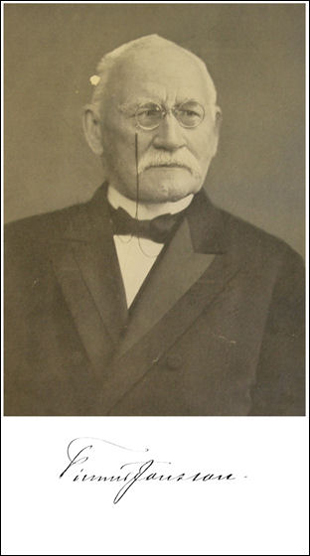Related Research Articles
Project Runeberg is a digital cultural archive initiative that publishes free electronic versions of books significant to the culture and history of the Nordic countries. Patterned after Project Gutenberg, it was founded by Lars Aronsson and colleagues at Linköping University and began archiving Nordic-language literature in December 1992. As of 2015 it had accomplished digitization to provide graphical facsimiles of old works such as the Nordisk familjebok, and had accomplished, in whole or in part, the text extractions and copyediting of these as well as esteemed Latin works and English translations from Nordic authors, and sheet music and other texts of cultural interest.

The Geatish Society was created by a number of Swedish poets and authors in 1811, as a social club for literary studies among academics in Sweden, with a view to raising the moral tone of society through contemplating Scandinavian antiquity. The society was formally dissolved in 1844, being dormant for more than 10 years.
Nordisk familjebok is a Swedish encyclopedia that was published in print from between 1876 and 1993, and that is now fully available in digital form via Project Runeberg at Linköping University. The public domain editions of the encyclopedia remain important reference works in Finland, especially on Finnish Wikipedia.

Georg Stiernhielm was a Swedish civil servant, mathematician, linguist and poet.

Fyrisvellir, Fyris Wolds or Fyrisvallarna was the marshy plain (vellir) south of Gamla Uppsala where travellers had to leave the ships on the river Fyris (Fyrisån) and walk to the Temple at Uppsala and the hall of the Swedish king.
Anund from Russia was the king of Sweden around 1070 according to Adam of Bremen's Gesta Hammaburgensis ecclesiae pontificum. According to this source, Anund came from Kievan Rus', presumably from Aldeigjuborg. Gårdske means that he came from Gardariki which was one of the Scandinavian names for Kievan Rus'.

The Archbishop of Uppsala has been the primate of Sweden in an unbroken succession since 1164, first during the Catholic era, and from the 1530s and onward under the Lutheran church.

Scandinavism, also called Scandinavianism or pan-Scandinavianism, is an ideology that supports various degrees of cooperation among the Scandinavian countries. Scandinavism comprises the literary, linguistic and cultural movement that focuses on promoting a shared Scandinavian past, a shared cultural heritage, a common Scandinavian mythology and a common language or dialect continuum and which led to the formation of joint periodicals and societies in support of Scandinavian literature and languages. The movement was most popular among Danes and Swedes. Nordism expands the scope to include Iceland and Finland.

Hrafna-Flóki Vilgerðarsson was a Norseman that intentionally sailed to Iceland. His story is documented in the Landnámabók manuscript; however, the precise year of his arrival is not clear. He was of Swedish origin
The stone circles of the Iron Age were a characteristic burial custom of southern Scandinavia and Southwestern Finland, especially on Gotland and in Götaland.
Ásmundar saga kappabana is the saga of Asmund the Champion-Killer, a legendary saga from Iceland, first attested in the manuscript Stockholm, Royal Library, Holm. 7, 4to, from the first half of the fourteenth century. It is essentially an adaptation of the German Hildebrandslied, but it has assimilated matter from the Tyrfing Cycle.
Jofur is a name used in Nordic literature for the thunder god, mainly as a synonym for Jupiter. Jofur probably originated in the writings of the 17th-century Swedish scientist and writer Olaus Rudbeckius, and has since been used in Nordic poetry, mainly during the Baroque and Rococo eras. Jofur does not appear in Norse mythology, even though the word was also used as an honorary title for kings and heroes. The most famous use of the word is in Carl Michael Bellman's (1740-1795) song Fredman's Epistle No. 72 "Glimmande Nymf", which remains very popular and which is frequently sung in renditions by numerous artists.
In Norse mythology, a vǫrðr is a warden spirit, believed to follow from birth to death the soul of every person.
Nordisk is a Scandinavian word meaning Nordic.
The Thing of all Swedes was the governing assembly held from pre-historic times to the Middle Ages at Gamla Uppsala, Sweden, occurring at the end of February or early March in conjunction with a great fair and a religious celebration called Dísablót. The Law of Uppland informs that it was at this assembly that the king proclaimed that the leidang would be summoned for warfare during the summer, and all the crews, rowers, commanders and ships were decided.

Finnur Jónsson was an Icelandic-Danish philologist and Professor of Nordic Philology at the University of Copenhagen. He made extensive contributions to the study of Old Norse literature.


Johan Gustaf Sandberg was a Swedish painter. He was foremost a history painter and used settings from Norse mythology and Swedish history. His most widely known work in this area are his frescoes in Uppsala Cathedral that depict the Swedish king Gustav Vasa. In addition to his history paintings, Sandberg painted a number of portraits.
Arkiv för nordisk filologi is an annual academic journal of Old Norse and older Scandinavian studies, published by Lund University. It was established in 1882 and was the first scholarly periodical entirely devoted to the field.
References
- ↑ Nordisk familjebok's article on Astrild (in Swedish)